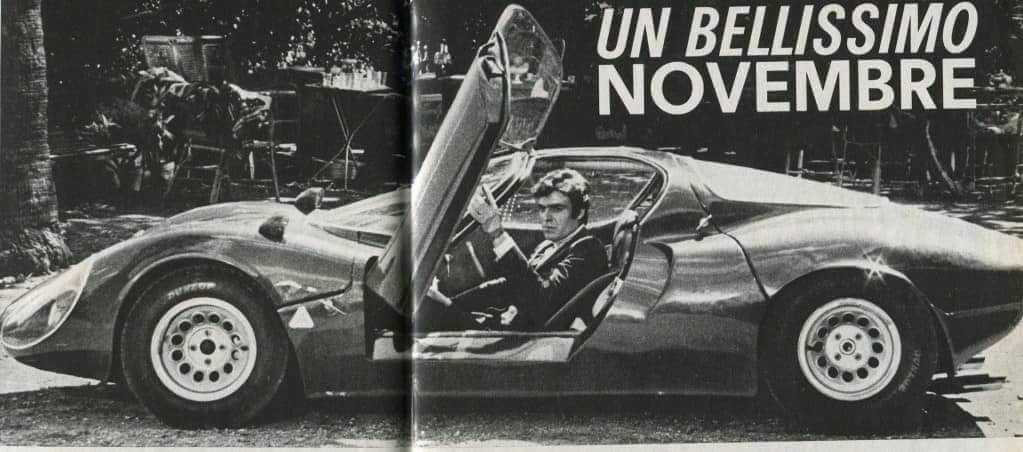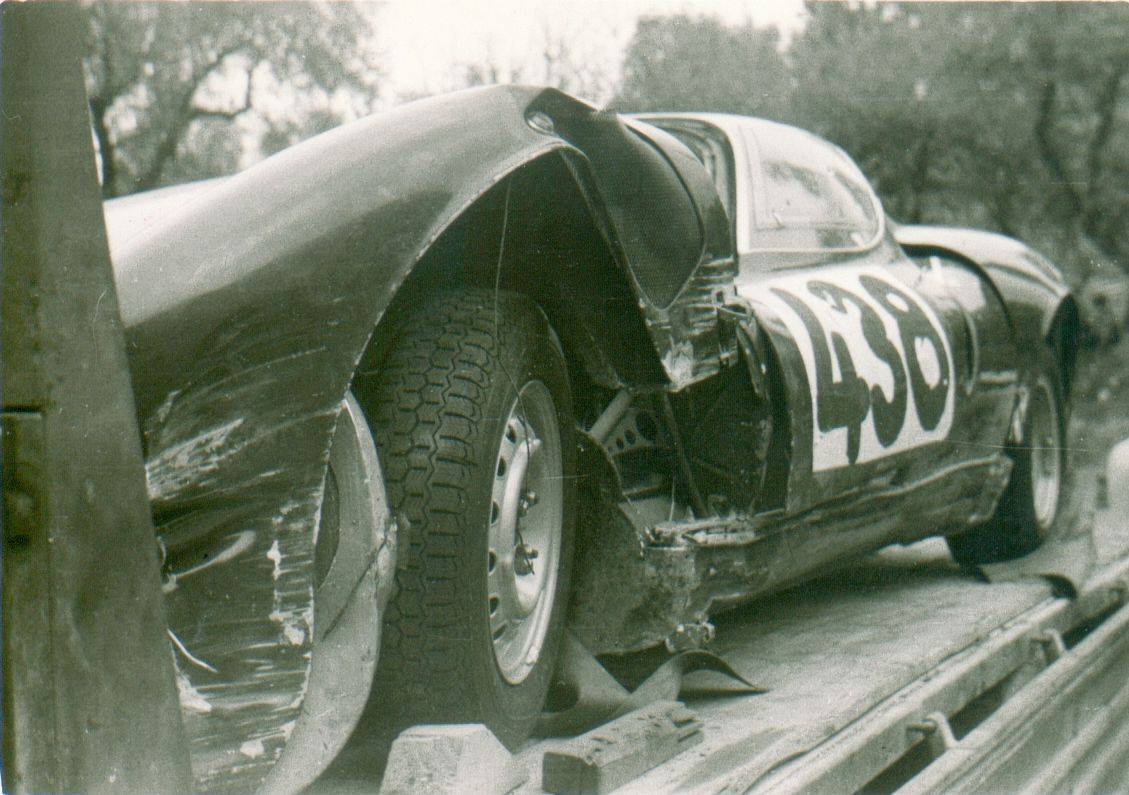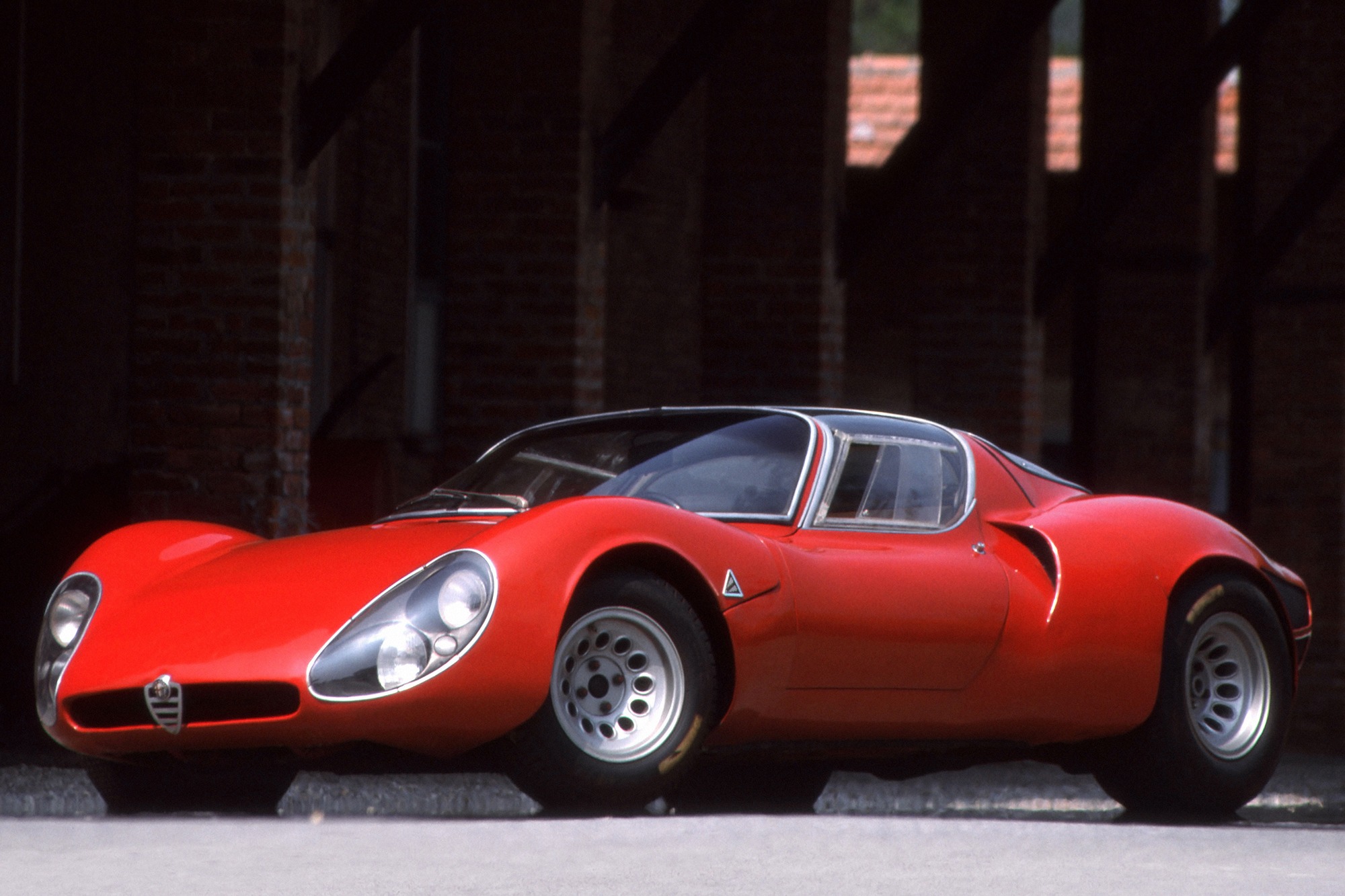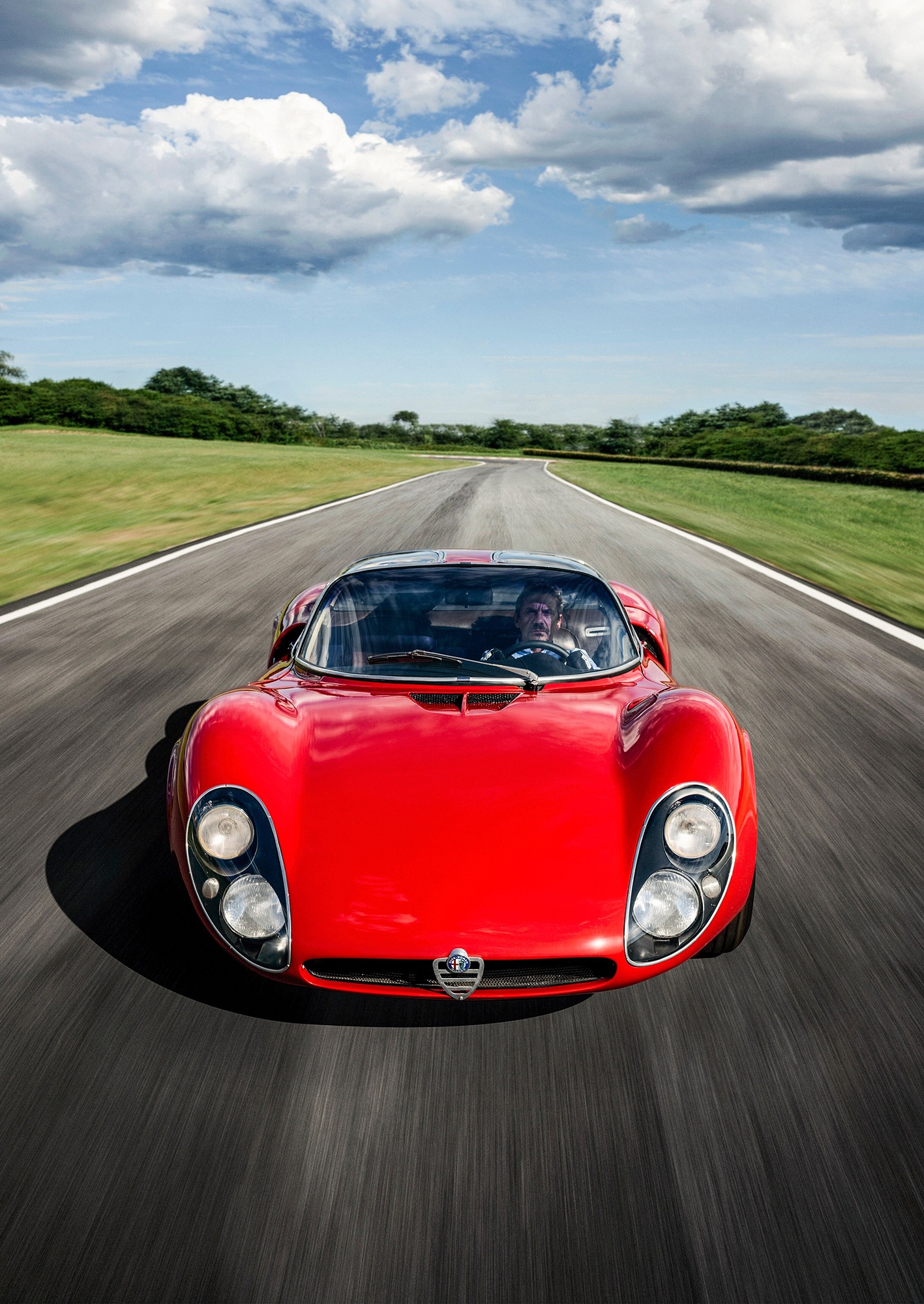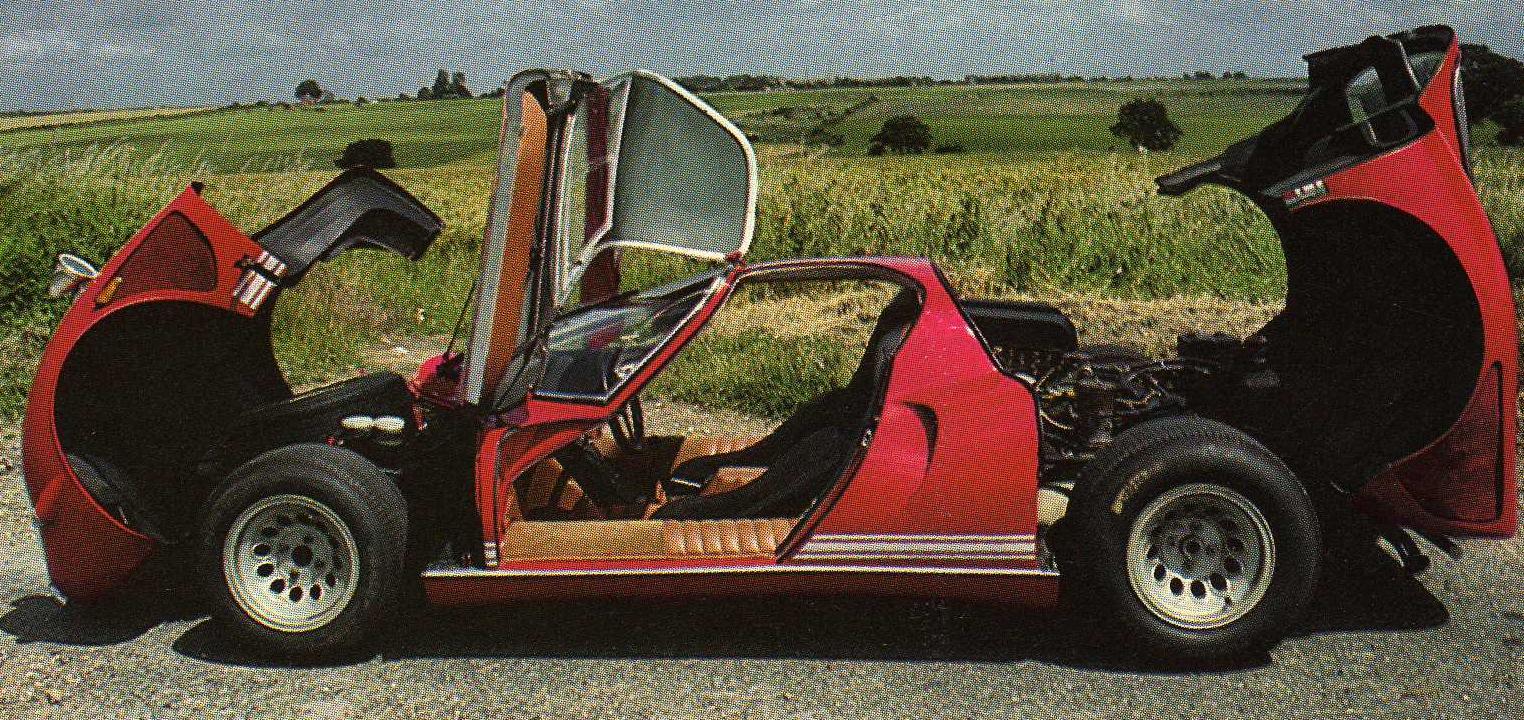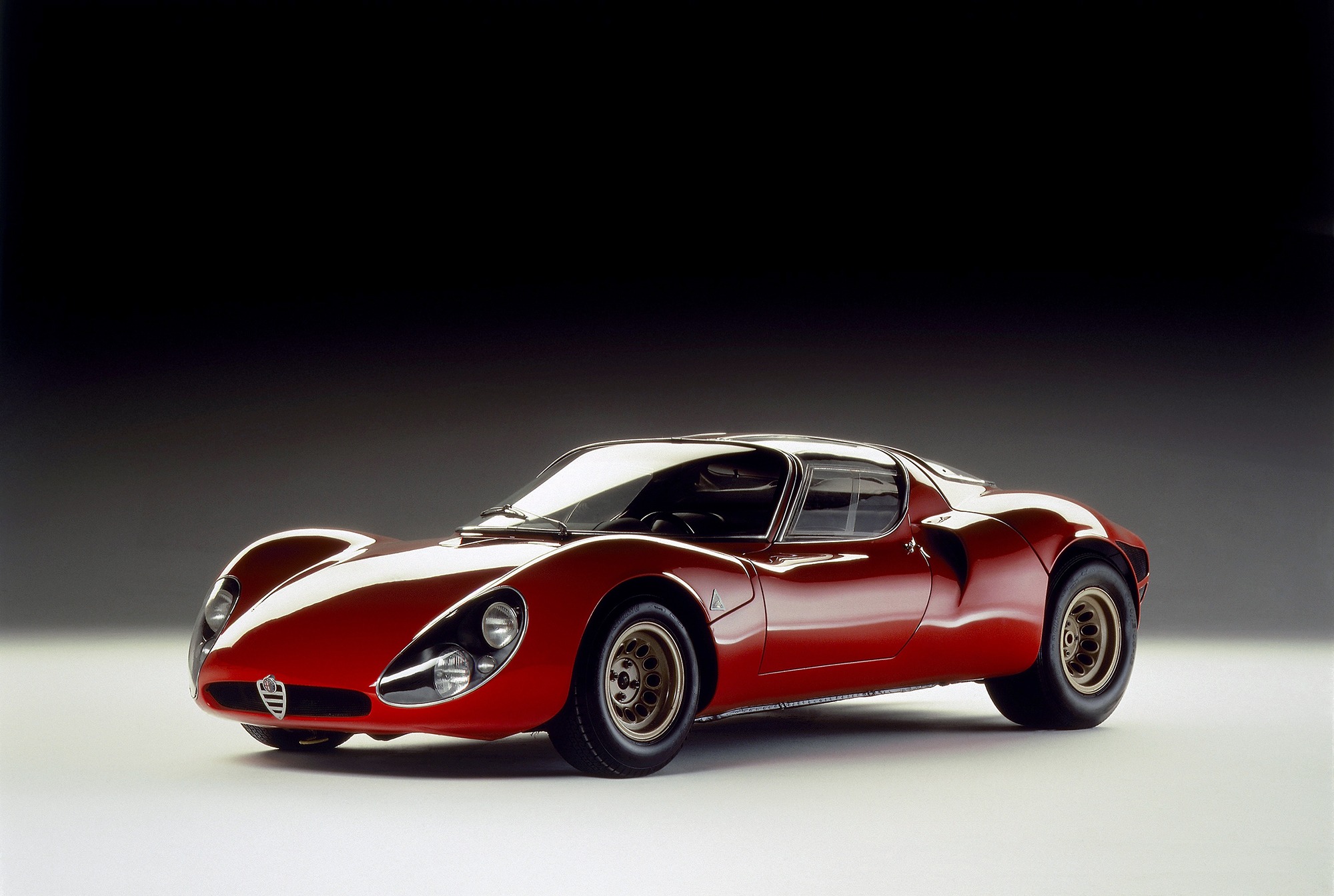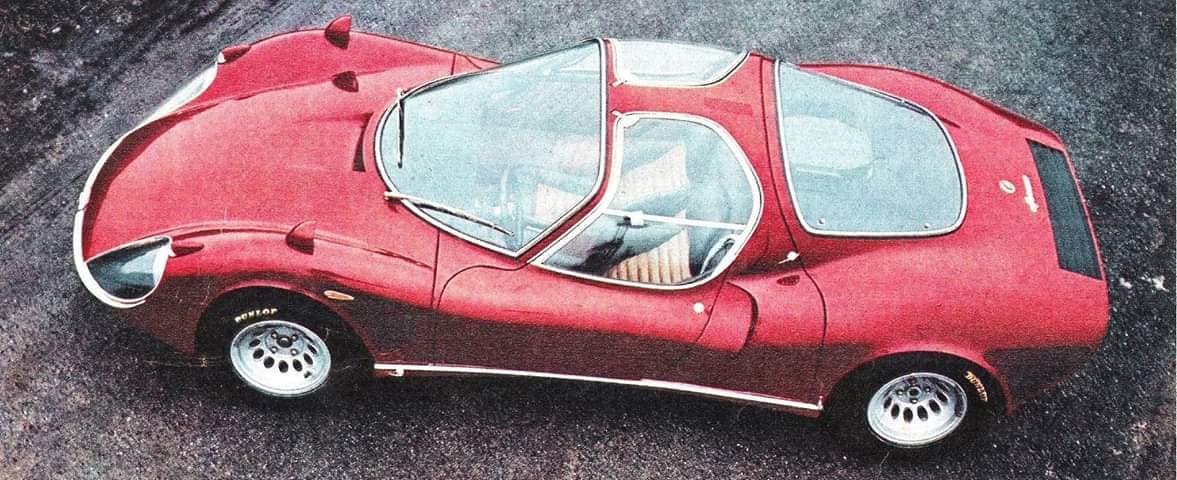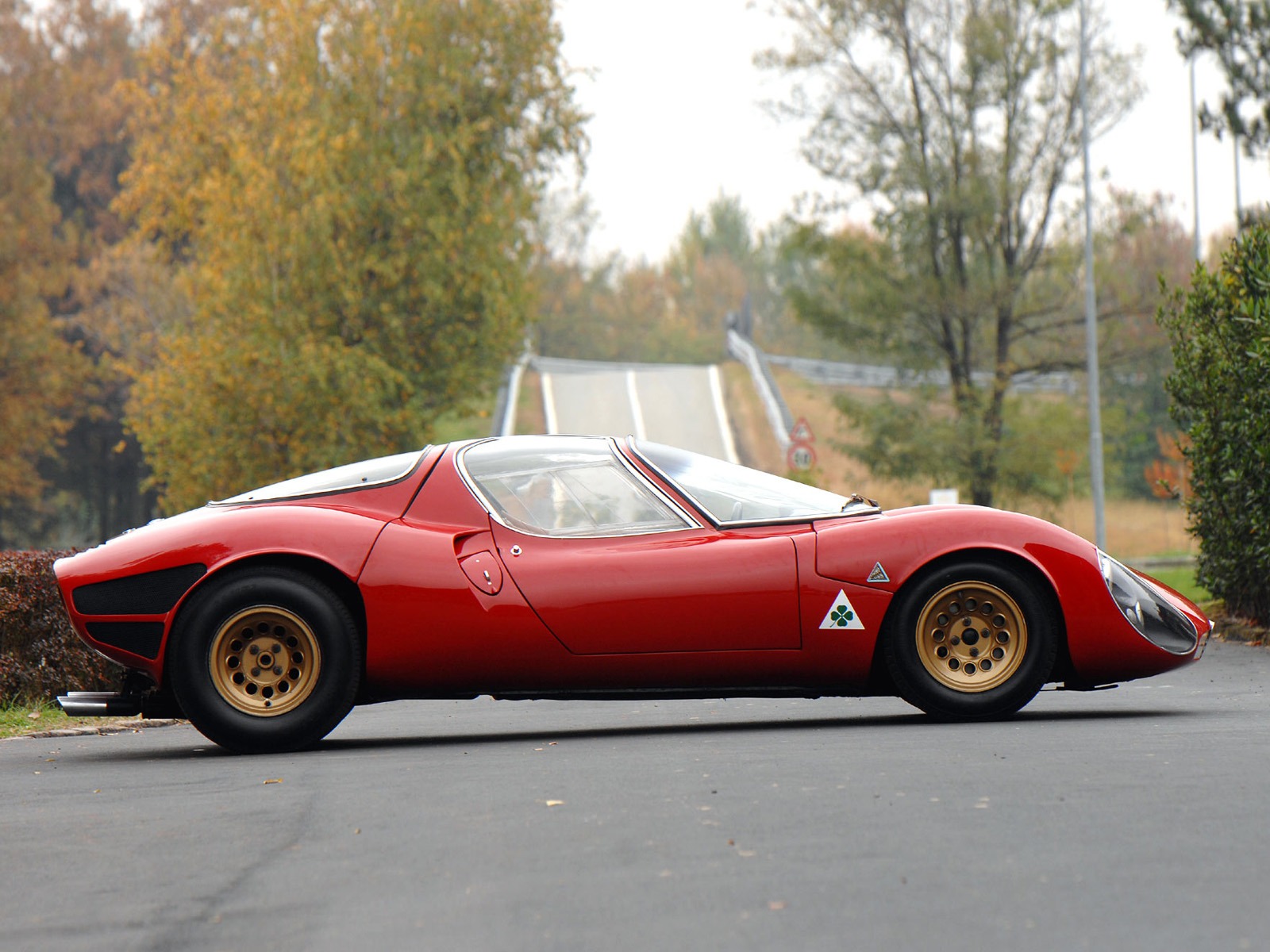
Super Alfa Romeo 33 Stradale
In the 1960s it was not that easy for Alfa Romeo. Starting from the 1930s, the manufacturer belonged to the government which, from time to time, was putting pressure on the managers of Alfa Romeo. Meanwhile, in the 1960s the Italian politicians strived to create new workplaces no matter what. However, there was a long way to go for moving the mountains.
While the politicians and opposing populists were occupied by trying to destabilize the situation within the country, “Autodelta”, the long-time partner of “Alfa Romeo”, did not take notice of imminent troubles.
A tiny group of engineers led by Franco Scaglione started creating a new “Alfa Romeo” model. The latter was completely different in comparison to those cars, which “Alfa Romeo” was forced to produce. Let me explain why.
First of all, the body of the new model was made out of aluminum, which was placed on an aluminum tubular chassis. This engineering solution ensured that “Alfa Romeo 33 Stradale” would not weigh more than 800 kilograms. Also, the 13-inch magnesium rims were mounted on the wheels of each example. Moreover, the disc brakes were installed in front as well as in the rear of the car, and the suspension system was borrowed from the race cars of “Autodelta”. “Alfa Romeo 33 Stradale” was assembled by hand as appropriate to a real supercar.
Since “Autodelta” did not have automated conveyor assembly lines, all work had to be done by the workers, who, unfortunately, not always achieved the same results. For example, some vehicles had dual headlights, others – single. Also, in some cars, the wipers had a different mounting position. The later models were equipped with additional air intakes behind the front and rear wheels to keep the brakes cool. However, these are just a few examples.
The cherry on top for “Alfa Romeo 33 Stradale” can be considered the engine which was mounted next to the rear axle. Like the car’s construction, the engine had so many things in common with the one built-in ”Autodelta” race cars.
“33 Stradale” from its analog inherited a crankshaft, fuel injection system, “Twin spark” technology (each cylinder has twin spark plugs) and the engine RPM was not restricted, thus, the engine could reach 10 000 RPM.

2.0–liter eight-cylinder engine was able to reach 230 HP at 8800 RPM and maximum torque at 7000 RPM. However, these values were only the theoretical numbers on the paper.

Due to the way how the vehicles were produced, some engines were not as powerful as the others. A few trustworthy sources published some examples where the previous “Alfa Romeo 33 Stradale” units had 245-hp engines while the later models were equipped with 260-hp engines.
Nevertheless, despite the differences in the engine bay, the 1968 “Alfa Romeo 33 Stradale” was astonishing. Mainly, there are two reasons, why.
First, many people were surprised due to its remarkable acceleration. This model could go from 0 to 100 km/h in less than 6 seconds and reach 260 km/h its maximum speed. Also, “33 Stradale” could cover quarter-mile (0.4 kilometers) in 24 seconds and these numbers were more impressive than “Lamborghini Miura” or “Ferrari Daytona” could achieve.
Second, it is its price. In 1968, “Alfa Romeo 33 Stradale” was not only the fastest but also the most expensive model of the year. In Italy, this car was worth 9.7 mln Italian lire, while you could purchase “Lamborghini Miura” for 7.7 mln Italian lire.

Sadly, the appearance of “Alfa Romeo 33 Stradale” happened at the same time as arisen unrest in France and Italy. It had a huge impact on the Italian industry, therefore, it was working only at 10-15% industrial capacity.
The “Alfa Romeo” supercar found itself in the middle of this crisis. Unfortunately, there were only 18 units ordered and it took 2 years to make them.
Today, “Alfa Romeo 33 Stradale” can be found at museums or at special events, where this Italian car always attracts the attention of the visitors.
It is considered, that, for this day, the original “33 Stradale” model can be worth at least 10 mln euro.













